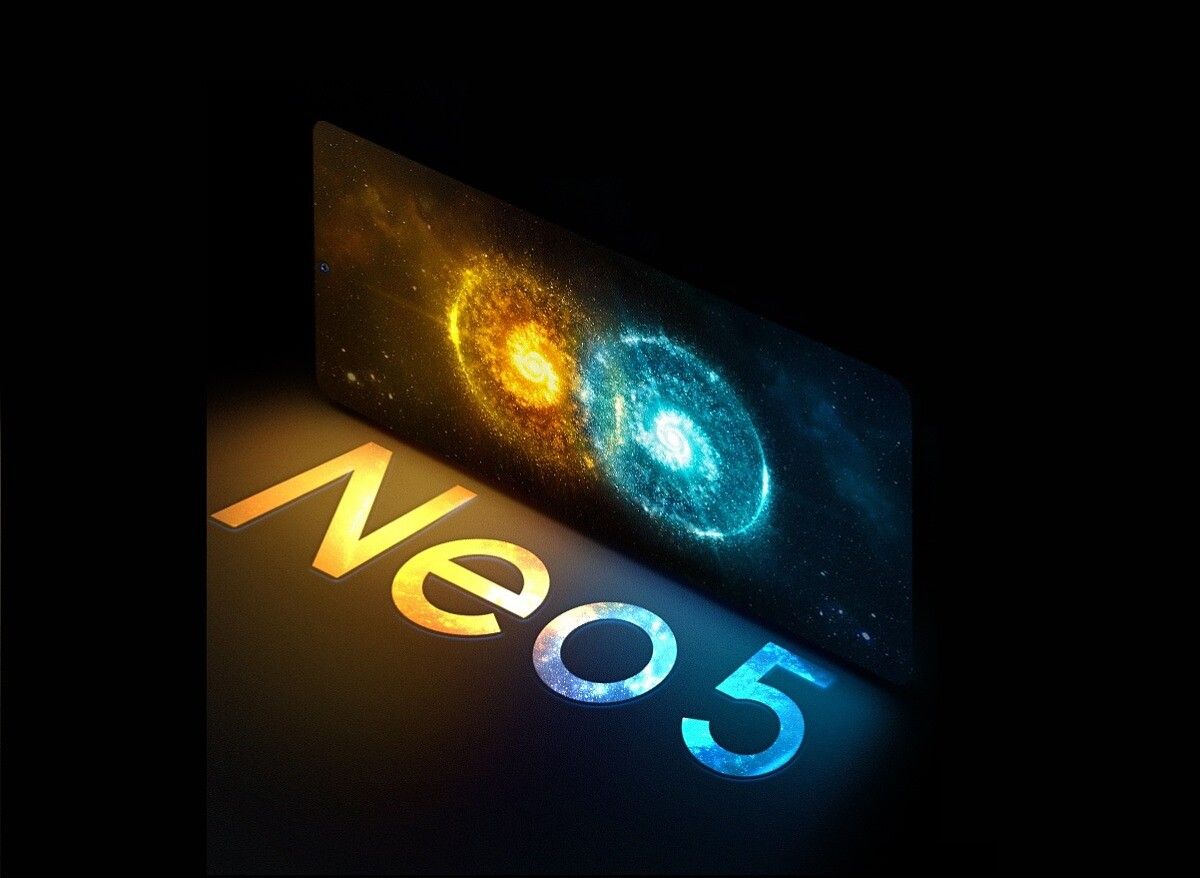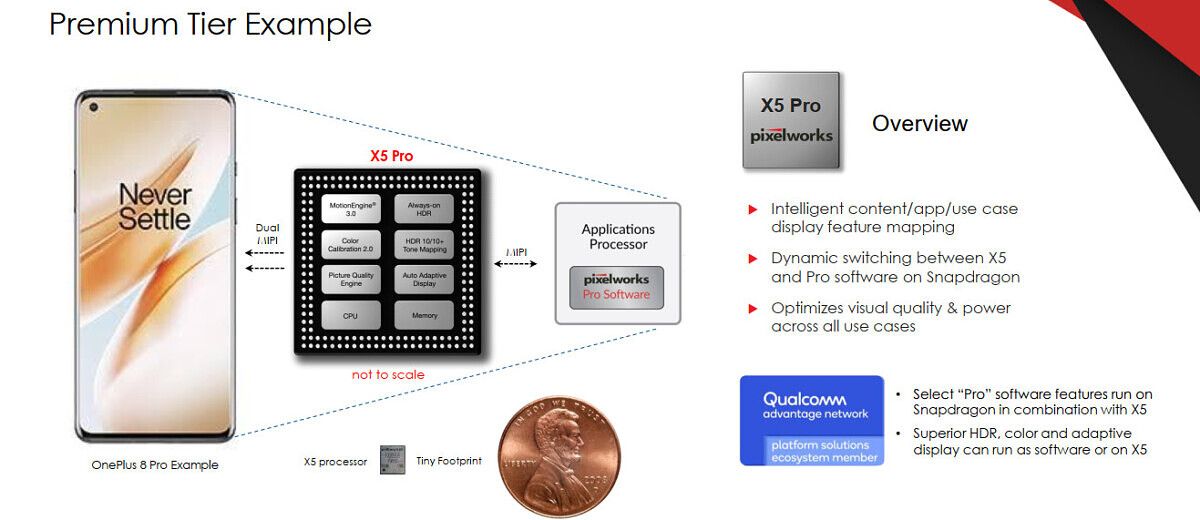Vivo just unveiled a new smartphone in China under its subbrand for gaming phones: iQOO. The new phone is called the iQOO Neo5, and it's powered by Qualcomm's Snapdragon 870, a souped-up version of last year's Snapdragon 865. While the iQOO Neo5 won't be as powerful as other gaming phones with Qualcomm's Snapdragon 888, it does have one trick up its sleeve that promises to improve the gaming experience. In partnership with Pixelworks, a company that specializes in making display processing chips, Vivo is shipping a new feature that can boost the visual performance of select popular mobile games.
In a press release, Pixelworks announced that the iQOO Neo5 is the first phone from Vivo to feature the X5 Pro display processor. This processor, which was previously marketed as the "Iris 5", sits between the application processor (AP) and the display driver IC in the display pipeline. The chip enables multiple display enhancement features such as a real-time motion processing engine that Pixelworks markets as "Motion Engine." While this technology is primarily used for boosting the frame rate of video content, Pixelworks believes it can be applied to gaming as well. The company developed a new feature called "Game Experience Mode" which ships first on the Vivo iQOO Neo5, and it's said to "[enable] silky smooth 120 fps game play at up to 30% lower power consumption and up to 10° C cooler device temperature" when compared to rendering the frames on the AP.
An overview of the Pixelworks X5 Pro. The chip is used in the OPPO Find X2 Pro and the OnePlus 8 Pro, but the iQOO Neo5 is the first to feature Pixelworks's new Game Experience Mode feature.
In its Q4 2020 earnings call, Pixelworks highlighted the potential for its expansion into mobile gaming. "Imagine a scenario in which gaming content could be specifically designed to take full advantage of Pixelworks' advanced motion engine and AI-adaptive display technology," said Todd A. DeBonis, CEO of Pixelworks. "Unlike relying on the AP-only alternatives, our solution avoids the need to step down frame rates or other performance throttling related to thermal or power budgeting." Last year, OnePlus phones were the first to gain support for 90fps game play in Fortnite, but we recommended against the new mode because it required lowering the graphical settings to "low." Pixelworks hopes that, with its new technology, gamers won't have to pick between high frame rate game play and good-looking graphics.
But the problem with applying motion estimation and motion compensation (MEMC) to gaming is in deciding what content to interpolate. Unlike TV shows or movies, games generally have many different layers and UI elements that need to be accounted for. In a briefing, Pixelworks told us it worked with game developers and studied popular game engines in order to get information on the layers as well as the raw pixels. As a result, they are able to apply their motion processing technology to games "more smoothly." Specifically, we're told that the X5 Pro's Motion Engine and PQ Engine processing can upconvert games rendered by the GPU at 30, 45, or 60fps to seem as if they're rendering at 90-120fps.
Naturally, any visual processing will introduce delay (that's why most gaming modes on TVs disable all post-processing features), so we asked the company if they could tell us exactly how much latency is introduced. We also asked them whether or not the result is generally artifact-free. We were told that there shouldn't be any "noticeable" latency or artifacting in supported games.
Because few games have the same layers and UI elements, the motion processor currently needs to be optimized on a game-by-game basis. As a result, boosted frame rate game play will be limited to a certain subset of games chosen by the OEM and optimized by Pixelworks. As an upside, because the processing happens all in the X5 Pro chip, existing games won't need to be updated to have boosted frame rates.
On the new iQOO Neo5, a few of the games that are supported include Game for Peace (the Chinese version of PUBG Mobile), Honkai Impact 3rd, and Perfect World. In addition, through the X5 Pro's SDR-to-HDR tone mapping feature, these games can also be enjoyed with HDR enabled. While we won't be able to test the Game Experience Mode feature since Vivo likely won't sell the iQOO Neo5 outside of China, we're hoping to test the feature at some point in the future when another manufacturer launches a phone with this chip and feature.


